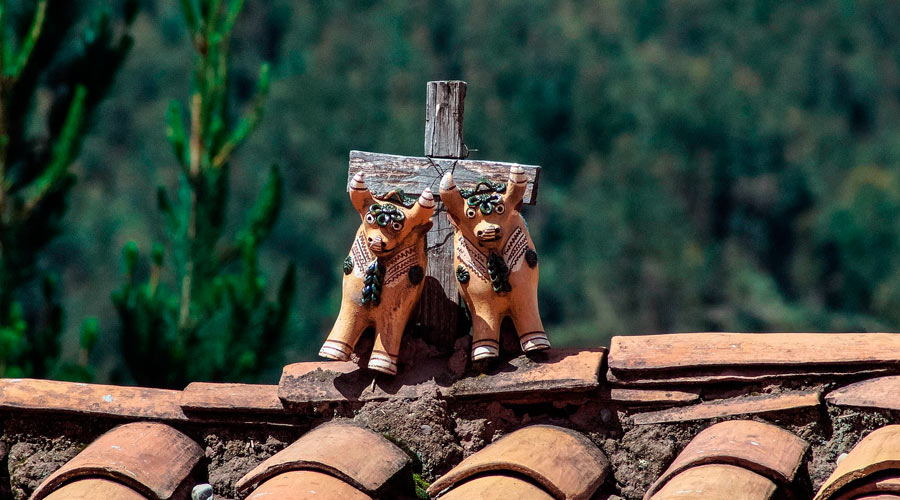Toritos de Pucará - Meaning

In Peru Andean Travel we are sure that if you know them, you have seen them on or inside a house or decorating a store, suddenly you already knew their name, but you probably do not know their history, Protection, Happiness and Fertility around a bull.
The Pucará bulls (Toritos de Pucara) are well known in many parts of the world for their curious appearance, it is difficult to see in ceramic a strong bull, well planted on the ground but with bulging and wild eyes, a tongue trying to lick its nose and many decorations as if someone I was going to mount them, it really is very rare, if to this we add a rare habit of placing bulls on top of houses but you have not asked yourself why?
Placing 2 bulls from Pucará and a cross in the middle on the houses is a very common custom in the Andean towns of Peru, in fact, I have seen them in almost all the country including the capital Lima, but it is much more frequent in Cusco, Puno, Ayacucho and Apurimac, as this tradition comes from a town called Pucará, 101 km north of Titicaca Lake Puno (about 2 hours by car).
How did the Toritos de Pucara tradition start?
It all begins when the Spanish arrived in the town of Pucará with their new animals, especially "El Toro" and included him in a party (which already existed) celebrating the payment to the land, where the bull was painted, decorated and saddled, to then put spicy on his nose, imagine the irritation and madness of the bull !!
Because this image was captured in many people, seeing a powerful bull with eyes wide with irritation from the spicy, trying to lick his nose and with his coiled tail very characteristic of brave bulls.
In those times, there were several communities in charge of making ceramics for the conquerors, due to their special care in their work, one of these communities was the Chepa Pupuja, who until now continue to make ceramics for many peoples, they in colonial times began to make the image of these ceramic bulls to maintain a magical-religious culture among the peasants, who automatically adopted this symbol as Protection, Happiness and Fertility in homes.
The Chepa Pupuja live in the community of Checa, they are not in Pucará however, they had to take their jobs where there were large numbers of people, thus selling their products, especially these bulls, in this way they came to establish their sale in the closest railway station, this station was in Pucará and that is why his work was known as “Toritos de Pucará”.
The bulls bring happiness, protection and fertility to all who inhabit their houses, in addition, it is considered a symbol of Andean identity that is why many families have them at the top of their homes, either on their roofs or as decorations in homes, to watch over homes, bless marriages and protect the family.
To visit this beautiful place we can take the option of Cusco Puno Bus or route of the sun.



Leave us your comment